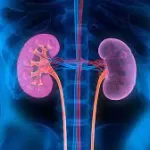
A recent study conducted by researchers from the Harvard T.H. Chan School of Public Health and Erasmus MC University Medical Centre has revealed a significant correlation between heightened physical activity in late childhood and augmented brain volume in regions associated with cognitive function, emotion regulation, learning, and mental health.
The investigation, part of the Generation R Study, a four-year longitudinal population-based cohort study in Rotterdam, the Netherlands, involved 1,088 children (52% girls) aged 10 years. Both children and their caregivers provided data on the children’s levels of physical activity and sports involvement. Changes in brain volume were assessed through MRI scans conducted at ages 10 and 14.
The findings demonstrated compelling associations between physical activity and brain development. For every additional hour spent participating in sports each week, there was a notable 64.0-mm³ increase in subcortical gray matter volume. Similarly, each extra hour per week engaged in total physical activity led to a substantial 154.0-mm³ enlargement in total white matter volume.
Moreover, total physical activity, as reported by various sources, was linked to a notable increase in amygdala volume over time. Children’s self-reported outdoor play was also positively correlated with amygdala volume expansion. Additionally, self-reported total physical activity by children was found to correspond with notable increases in hippocampal volume.
Dr. Fernando Estévez-López, lead author of the study, emphasized the significance of these findings, stating, “Physical activity is one of the most promising environmental exposures favorably influencing health across the lifespan. This study adds to prior literature by highlighting the neurodevelopmental benefits physical activity may have on the architecture of the amygdala and hippocampus.”
The study, published in JAMA Network Open on October 5, underlines the potential of physical activity to positively impact brain development. However, it is important to note the study’s limitations, including its reliance on baseline data for confounding factors, the lack of causal conclusions, and the use of unvalidated questionnaires for gathering physical activity information.
While individual authors disclosed financial support, no specific funding was allocated for this study. Dr. Estévez-López reported no relevant financial conflicts. A detailed disclosure statement is available in the original article.











